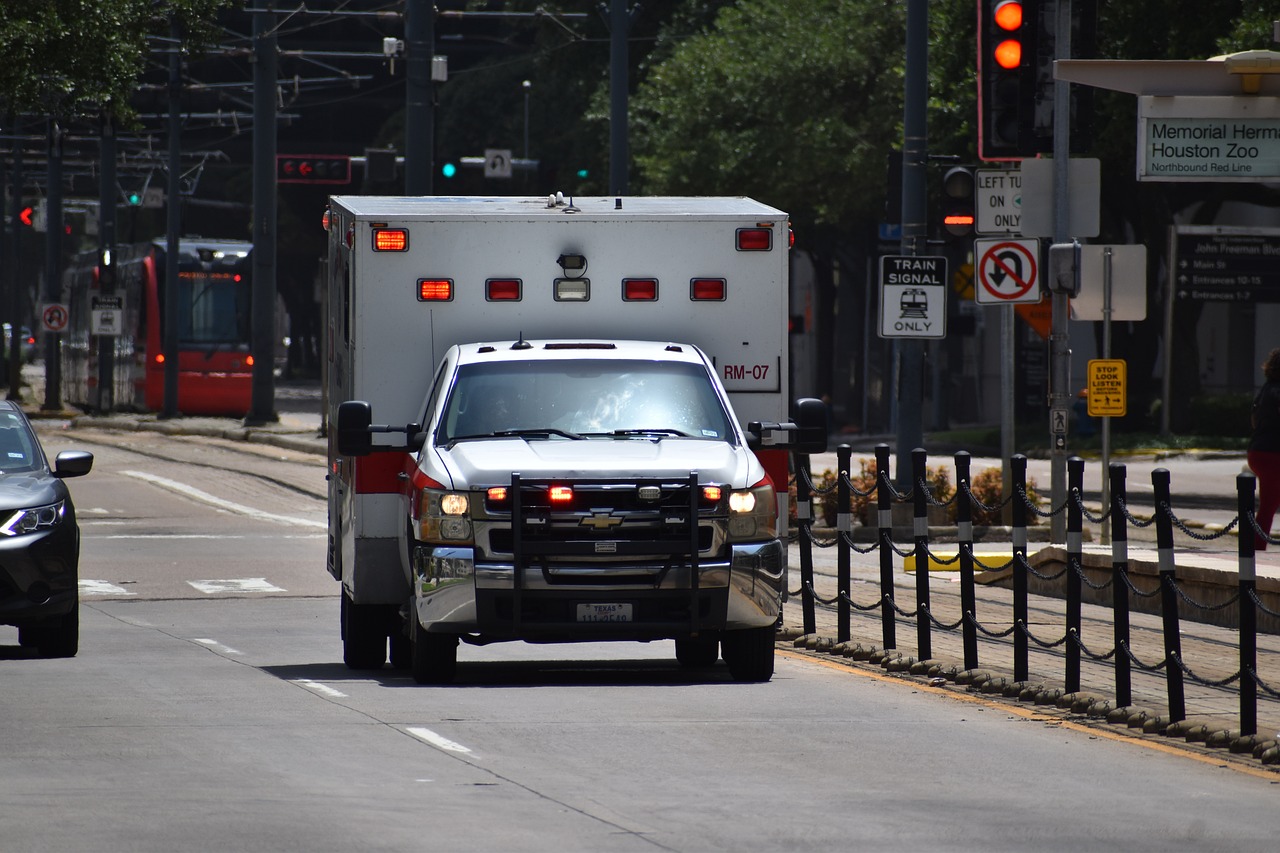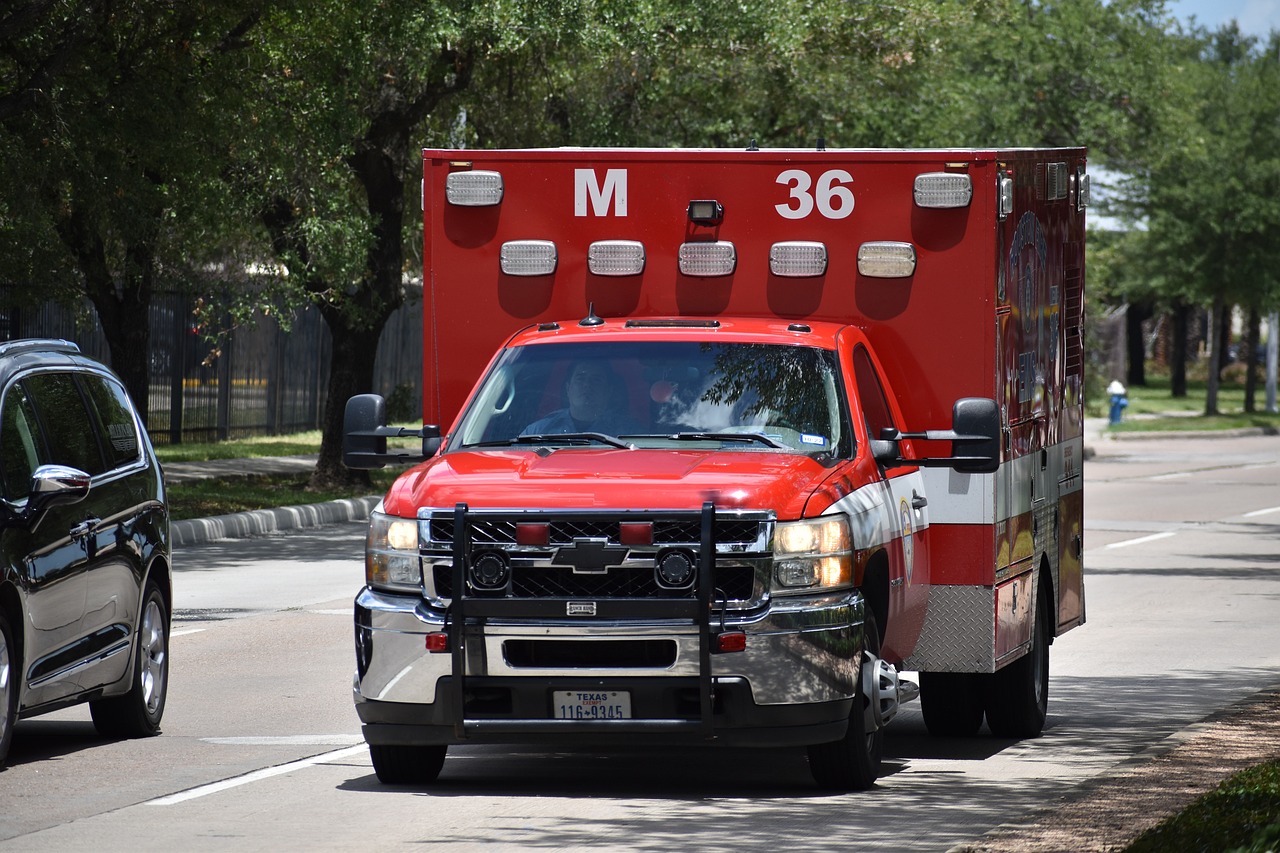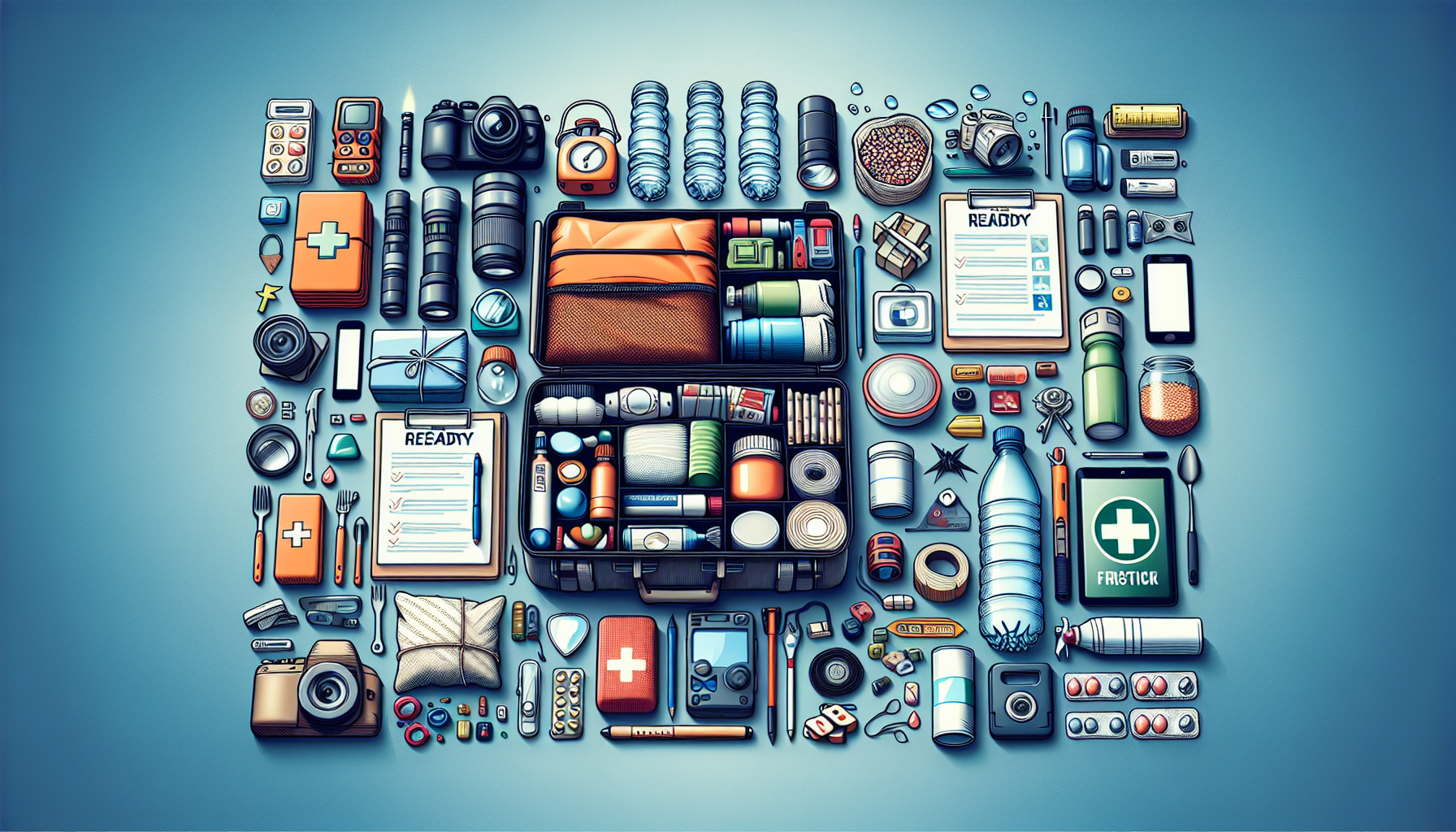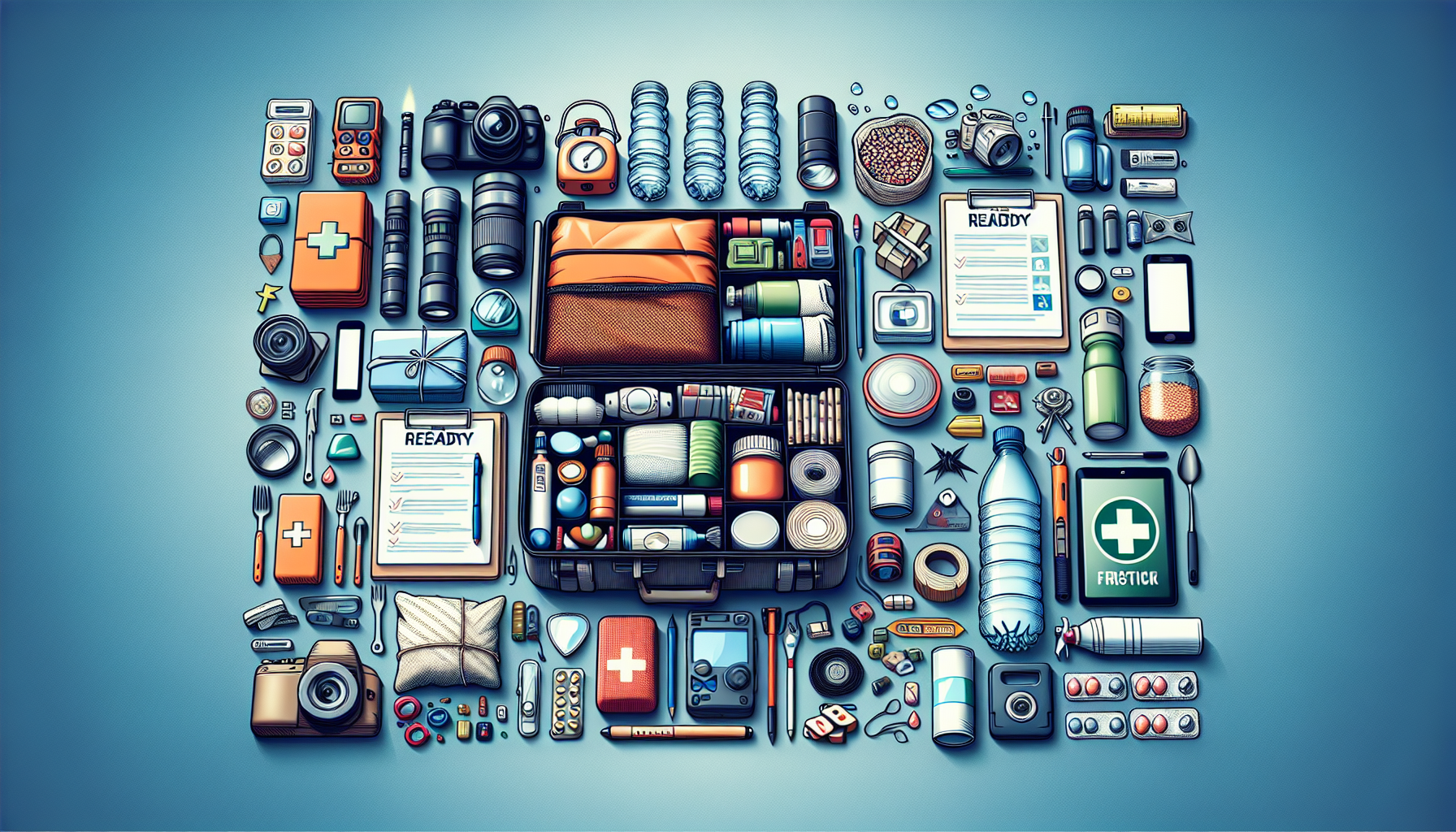In the face of an unpredictable natural disaster, it is crucial to have a solid plan in place to ensure the safety and well-being of yourself and your loved ones. From earthquakes to hurricanes, preparing for these events can feel overwhelming, but fear not, for this article will provide you with essential tips and advice on how to effectively and efficiently prepare for a natural disaster. By following these simple steps, you can minimize the potential risks and navigate through the chaos with confidence and peace of mind. Read on to discover the key strategies that will empower you to be proactive and ready for whatever Mother Nature may throw your way.

Creating an Emergency Plan
When it comes to preparing for a natural disaster, one of the first steps you should take is creating an emergency plan. This plan will serve as a guide for you and your family in case of any unforeseen circumstances. The first thing you need to do is identify potential risks that are specific to your region. Is your area prone to earthquakes, floods, hurricanes, or wildfires? Understanding the risks will help you better prepare for them.
Once you have identified the potential risks, the next step is to establish communication channels. During a natural disaster, it is crucial to stay in touch with your loved ones. Designate a family member or friend who lives outside the area as a point of contact. This way, if local communication networks are down, you can still relay important information through this trusted individual.
In addition to establishing communication channels, it is essential to designate meeting points. Determine a safe location where your family can gather if you are separated during a disaster. Choose multiple meeting points, both within and outside your neighborhood, to account for different scenarios. This will ensure that everyone knows where to go and can reunite quickly and safely.
Lastly, it is crucial to develop evacuation routes. Familiarize yourself with the evacuation plans provided by your local authorities. Identify multiple routes to reach safe areas, as some roads may be blocked or congested during emergencies. Mark these routes on a map so that when the time comes, you and your family can evacuate efficiently and evade any potential dangers.
Stocking Essential Supplies
When disaster strikes, having essential supplies readily available can make all the difference. Here are some crucial items you should include in your emergency kit:
Water
Water is the most important item to have in your emergency kit. Make sure you have enough water to last at least three days for each member of your household. The general recommendation is one gallon per person per day, but you may need more if the weather is exceptionally hot or if you have medical conditions that require additional hydration.
Non-perishable food items
Stock up on non-perishable food items that can sustain you and your family for several days. Canned goods, dry fruits, energy bars, and ready-to-eat meals are excellent choices. Remember to choose food that does not require refrigeration, cooking, or additional water.
First aid kit
A well-stocked first aid kit is essential in any emergency situation. Make sure it includes bandages, antiseptic wipes, painkillers, adhesive tape, scissors, and any necessary prescription medications. Consider taking a first aid and CPR course to ensure you have the knowledge and skills to provide basic medical assistance if needed.
Prescription medications
If you or any member of your family takes prescription medications, ensure you have an adequate supply on hand. Store them in a waterproof container and regularly check their expiration dates to keep them up-to-date.
Flashlights and batteries
Power outages are common during natural disasters, so having flashlights and batteries readily available is crucial. Make sure you have enough flashlights for every member of your household, along with extra batteries to power them for an extended period.
Emergency cash
In a disaster situation, ATMs and credit card machines may not be operational. It is always a good idea to have some emergency cash on hand. Keep a small stash of cash in a secure location within your emergency kit, as it may become necessary for purchasing essential items or services during a crisis.
Securing Your Home
Preparing your home to withstand a natural disaster is an essential part of your overall emergency preparedness. Here are some steps you can take to secure your home:
Reinforcing doors and windows
Ensure that your doors and windows are sturdy and properly reinforced to withstand strong winds or potential intruders. Consider installing impact-resistant windows and reinforcing entry points with additional security measures like deadbolt locks and reinforced strike plates.
Securing heavy furniture and objects
In the event of an earthquake or strong winds, unsecured heavy furniture and objects can become dangerous projectiles. Secure bookshelves, cabinets, and large appliances to the wall using brackets or straps. Additionally, anchor tall or top-heavy furniture to prevent tipping over.
Installing smoke detectors and fire extinguishers
Fires can be a significant risk during and after a disaster. Install smoke detectors on every level of your home and inside every sleeping area. Regularly test the detectors and replace batteries as needed. Additionally, consider having fire extinguishers strategically placed throughout your home, especially in the kitchen and near heat sources.
Checking the structural integrity of the building
Regularly inspect your home for any signs of structural damage or vulnerabilities. Look for cracks in the walls, foundation, or ceilings. Pay attention to any leaks or dampness that could indicate water damage. Address any concerns promptly and consult a professional if needed.
Establishing safe zones
Identify safe zones within your home where you and your family can take shelter during different types of emergencies. For example, if you live in an area prone to tornadoes, choose an interior room on the lowest level of your home without windows. Familiarize everyone with these safe zones and discuss what actions should be taken when seeking shelter.
Preparing Important Documents
In the event of a natural disaster, protecting your important documents and records is critical. Consider the following steps to prepare your important documents:
Creating digital copies
Make digital copies of all your essential documents, such as identification cards, passports, birth certificates, and insurance policies. Scan each document and save them securely on an external hard drive or in the cloud. This ensures that even if your physical copies are lost or damaged, you can easily access the information you need.
Gathering identification documents
Collect all your vital identification documents and store them in a waterproof and fireproof container. This includes passports, driver’s licenses, social security cards, and birth certificates. Keep these documents easily accessible in case you need to grab them quickly during an evacuation.
Storing insurance policies and important records
Keep your insurance policies, wills, and any other essential legal documents in a secure location. Consider using a safe deposit box, a fireproof safe, or a dedicated file cabinet. Ensure your loved ones know where these documents are kept and how to access them if necessary.
Backing up data
Backing up your important computer files and data is crucial, especially if you rely on technology for essential tasks or store valuable digital files. Regularly back up your files to an external hard drive or cloud storage service. Make sure to include important financial records, family photographs, and any other digital files that are of value to you.
Keeping emergency contact information
Create a list of emergency contact information for your family members, friends, doctors, insurance providers, and other essential contacts. Keep a physical copy in your emergency kit, as well as a digital copy saved on your phone or in the cloud. Having these contact details readily available can help you quickly reach out for assistance during a crisis.

Building an Emergency Kit
An emergency kit should contain essential items that can help you survive and stay safe during a natural disaster. Here are some items you should include in your emergency kit:
Basic first aid supplies
Your emergency kit should include basic first aid supplies such as bandages, disinfectant, pain relievers, tweezers, and scissors. Additionally, consider including any necessary prescription medications and specific medical supplies for family members with special medical needs.
Personal hygiene items
Maintaining good hygiene during a natural disaster is essential for preventing illness and maintaining comfort. Include items such as toilet paper, hand sanitizer, wet wipes, feminine hygiene products, and any other personal care items you may need.
Tools and emergency equipment
Having a basic set of tools can be beneficial in times of crisis. Include items such as a multi-tool, duct tape, rope, and a small shovel. Additionally, consider including emergency equipment such as a whistle, a compass, and a signal mirror for signaling rescuers.
Extra clothing and blankets
Pack enough extra clothing for each family member, including sturdy shoes and rain gear. Natural disasters can create harsh weather conditions, so it is essential to have warm clothing and blankets to stay comfortable during evacuation or sheltering in place.
Emergency communication devices
Include a battery-powered radio or a hand-crank radio in your emergency kit. This will allow you to stay informed about the latest news and emergency updates when power and internet services are disrupted. Additionally, consider including spare batteries, a portable charger for your cell phone, or a solar-powered charger.
Special items for children or pets
If you have children or pets, don’t forget to pack essential items to keep them comfortable during a disaster. This may include diapers, formula, bottles, games, toys, pet food, leashes, and any special medications or supplies they may require.
Obtaining Adequate Insurance Coverage
Having adequate insurance coverage can help you recover more quickly in the aftermath of a natural disaster. Here are some steps you can take to ensure you have the right coverage:
Contacting insurance providers
Reach out to your insurance providers and discuss your coverage options. Understand the extent of your current policies and determine if additional coverage is necessary to protect your property and belongings.
Reviewing policies and coverage
Read through your insurance policies carefully and make sure you understand what is covered and what is not. Pay attention to any specific limits or exclusions. Consider consulting with an insurance professional to help you review and understand your policies.
Understanding deductibles and limitations
Take note of the deductibles and limitations stated in your insurance policies. Ensure you can meet the deductibles in case of a claim. Understand any limitations, such as coverage for certain natural disasters or caps on specific types of losses.
Exploring additional disaster-specific insurance
Depending on your geographical location and the specific risks you face, you may need additional insurance coverage. Look into policies that provide coverage for flood damage, earthquake damage, or other disasters that are common in your area. Discuss these options with your insurance providers to determine what additional coverage may be necessary for your circumstances.

Staying Informed
Staying informed about the latest developments during a natural disaster is crucial for your safety and the safety of your loved ones. Here are some ways you can stay informed:
Monitoring local news and weather reports
Regularly check local news stations and weather reports for updates on any evolving situations or warnings. Pay attention to official announcements from local authorities and follow their instructions.
Signing up for emergency alerts
Register for emergency alert systems provided by your local government or community. These systems will send important notifications directly to your phone or email, keeping you informed about emergency situations in your area.
Following official social media accounts
Follow the social media accounts of local emergency management agencies, law enforcement, and other relevant organizations. They often share real-time updates, safety tips, and important information during emergencies.
Listening to emergency radio channels
Have a battery-powered or hand-crank radio readily available and tuned to emergency radio channels. These channels provide critical information, including evacuation orders, shelter locations, and safety instructions.
Practicing Emergency Drills
Preparing for a natural disaster involves not only having the right supplies but also knowing how to use them effectively. Regularly practicing emergency drills can help you and your family be better prepared. Consider the following activities:
Regularly conducting evacuation drills
Practice evacuating your home using different routes and meeting at designated locations. Test your family’s ability to quickly and safely gather necessary supplies from your emergency kit and execute your emergency plan efficiently.
Practicing using fire extinguishers
Familiarize yourself with how to use different types of fire extinguishers and practice extinguishing small controlled fires safely. Make sure that every adult in your household knows how to properly use a fire extinguisher.
Simulating different disaster scenarios
Create scenarios based on the potential risks you identified in your area. Simulate disaster situations such as earthquakes, floods, or hurricanes, and practice appropriate response actions. This will help your family become more comfortable with emergency procedures and make better decisions under pressure.
Incorporating emergency-related games for children
Make emergency preparedness fun for children by incorporating games and activities into your drills. For example, create a scavenger hunt where children have to find items from the emergency kit or simulate a “mock” evacuation to make the process more engaging and educational.

Caring for Vulnerable Individuals
During a natural disaster, certain individuals may require special care and attention. Here are some considerations for caring for vulnerable individuals:
Making arrangements for the elderly
If you have elderly family members or neighbors, ensure they have the necessary support and care arrangements in place. Check on them regularly during emergencies and help them develop their own emergency plans.
Preparing for the needs of people with disabilities
If you or a family member has a disability, take the necessary steps to ensure their safety and well-being during a disaster. Plan for any equipment or accommodations they may require and communicate their needs to emergency responders or support organizations.
Creating a support network for pets
Pets are considered family members and should be included in your emergency preparedness plans. Make sure you have enough food, water, and supplies for your pets in your emergency kit. Identify pet-friendly shelters or accommodations in case you need to evacuate with your furry friends.
Considering the special requirements of infants
If you have young children or infants, ensure you have an ample supply of necessary items such as formula, diapers, wipes, and medications. Store extra supplies in your emergency kit and maintain regular backups to avoid running out during critical times.
Engaging with the Community
Disaster preparedness efforts are most effective when the whole community is involved. Here are some ways you can engage with your community in disaster preparedness:
Participating in local disaster preparedness programs
Take advantage of any local disaster preparedness programs or initiatives offered by your community. Many organizations host free or low-cost training sessions, workshops, and educational programs to help residents prepare for emergencies.
Attending community meetings and workshops
Attend community meetings and workshops focused on disaster preparedness. These gatherings provide an opportunity to learn from experts, ask questions, and share your own knowledge and experiences with your neighbors.
Joining or forming neighborhood emergency groups
Consider joining or forming a neighborhood emergency group with your neighbors. This group can collaborate on emergency plans, share resources, and support each other during and after a disaster. Working together as a community can greatly enhance the resilience of everyone involved.
Sharing resources and information within the community
Encourage open communication within your community by sharing valuable resources and information related to disaster preparedness. This could include distributing preparedness checklists, organizing neighborhood drills, or simply sharing helpful tips and tricks with your neighbors.
By following these guidelines and taking the necessary steps to prepare for a natural disaster, you can greatly enhance your ability to protect yourself, your loved ones, and your property. Remember, preparedness is key, and by being proactive, you are taking a significant step towards ensuring your safety in the face of adversity. Stay safe, stay informed, and be prepared!


